The Ultimate Art and Design Guide to Beirut
A thrilling cultural revival is putting the storied Lebanese capital back on the map

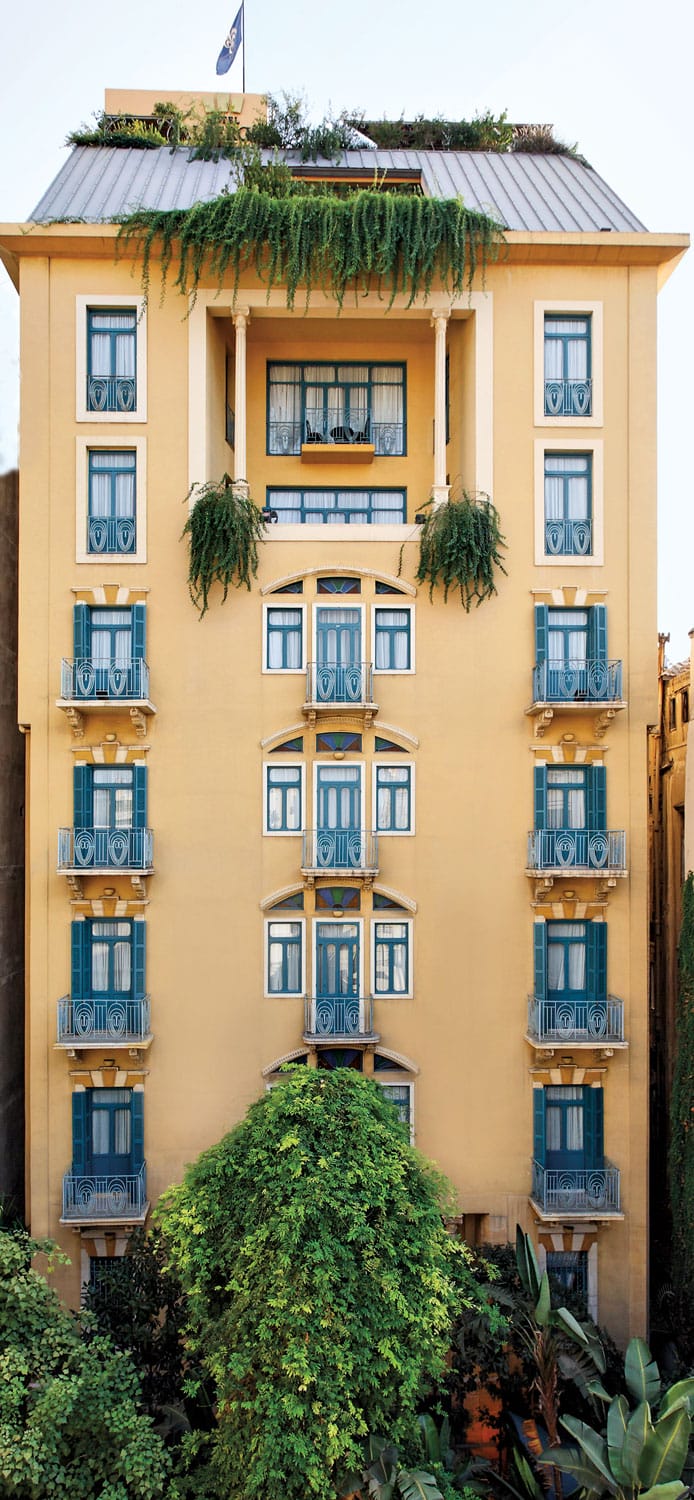
A popular local legend says that Beirut was destroyed seven times. And seven times it was rebuilt. In the 1960s, the city was known for its vibrant social scene, attracting artists and glamorous jet-setters. Located on the Mediterranean Sea and fringed by dramatic mountains, the city, with its cosmopolitan-leaning and intellectual lifestyle, had earned itself the nickname Paris of the Middle East. Lebanon’s civil war of 1975–90 wiped out all of it. All except that unique spirit of creativity that seems to blossom as an antidote to destruction.
Rising out of the tumultuous years of war, Beirut is once again alive with cultural activity. Kicking off on September 19, the Beirut Art Fair returns for its ninth edition, gathering roughly 50 contemporary art galleries, some from the Middle East and North Africa. A major satellite exhibition, “Cycles of Collapsing Progress,” will breathe life into the International Fairground at Tripoli, the series of half-finished sculptural buildings designed by Pritzker Prize–winning architect Oscar Niemeyer in the 1960s. Taking place the same week is the eagerly anticipated second Beirut Design Fair, which aims to promote the burgeoning Lebanese design scene.
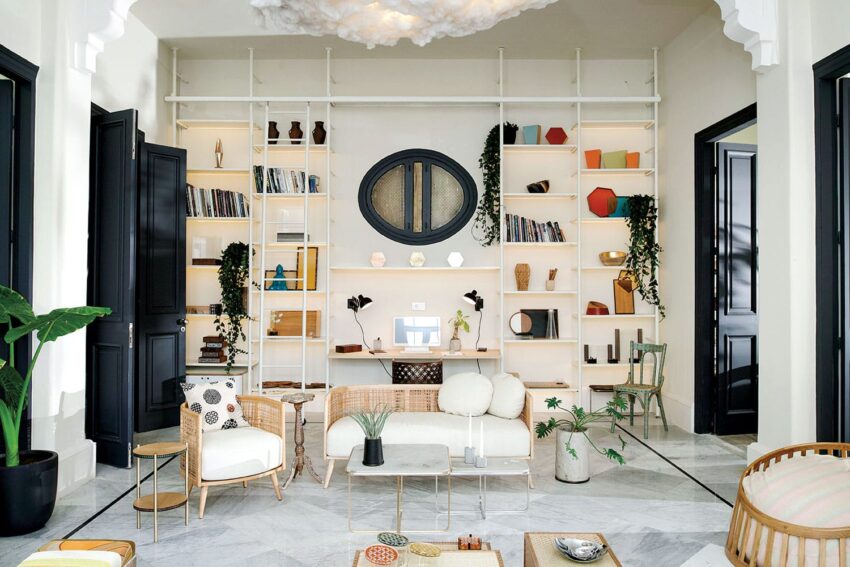
“There’s something magical about the mix of heritage and modernity, and the upcoming fairs make this even more palpable,” says Beirut-born, Paris-based architect Aline Asmar d’Amman.
Recommended: Interior Designer Aline Asmar d’Amman’s Shares Her Inspirations
Across the city, a slew of new private art foundations and galleries have recently cropped up. One symbol of the city’s renaissance is the Aïshti Foundation, a striking 375,000-square-foot waterfront art space and retail complex that opened in 2015. Designed by architect Sir David Adjaye, it was conceived by retail magnate Tony Salamé to showcase his private contemporary art collection.
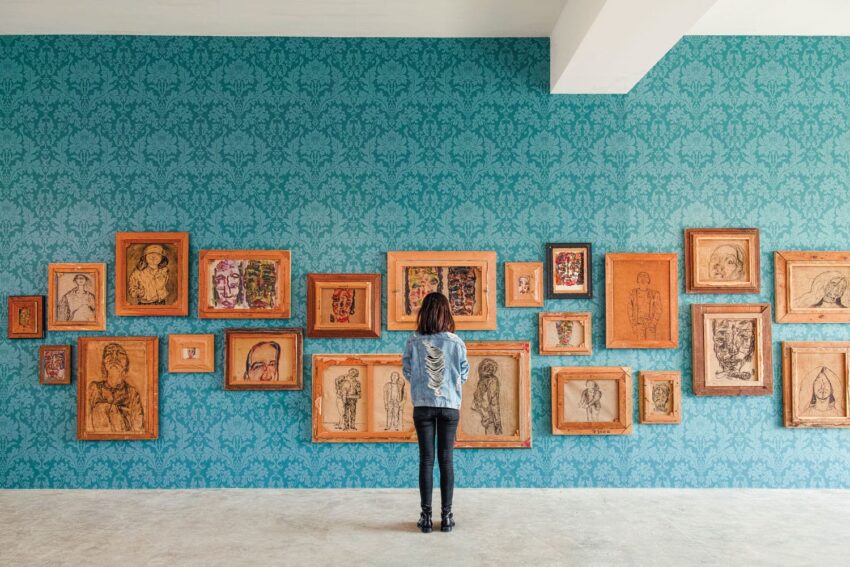

For a dose of the city’s ancient history, the Beirut National Museum contains an extraordinary collection of archaeological artifacts, including relics from the Phoenician civilization. Nearby, the impressive Mim Museum, which houses a mineral collection, is a treasure.
Other institutions strive to reconnect Beirut to its legendary past. The Sursock Museum, for example, is a Venetian- and Ottoman-style mansion that was built in 1912 and recently reopened after a $10 million renovation by the French architect Jean-Michel Wilmotte. This fall, don’t miss the 33rd edition of the “Salon d’Automne,” a yearly showcase of established and emerging talents.
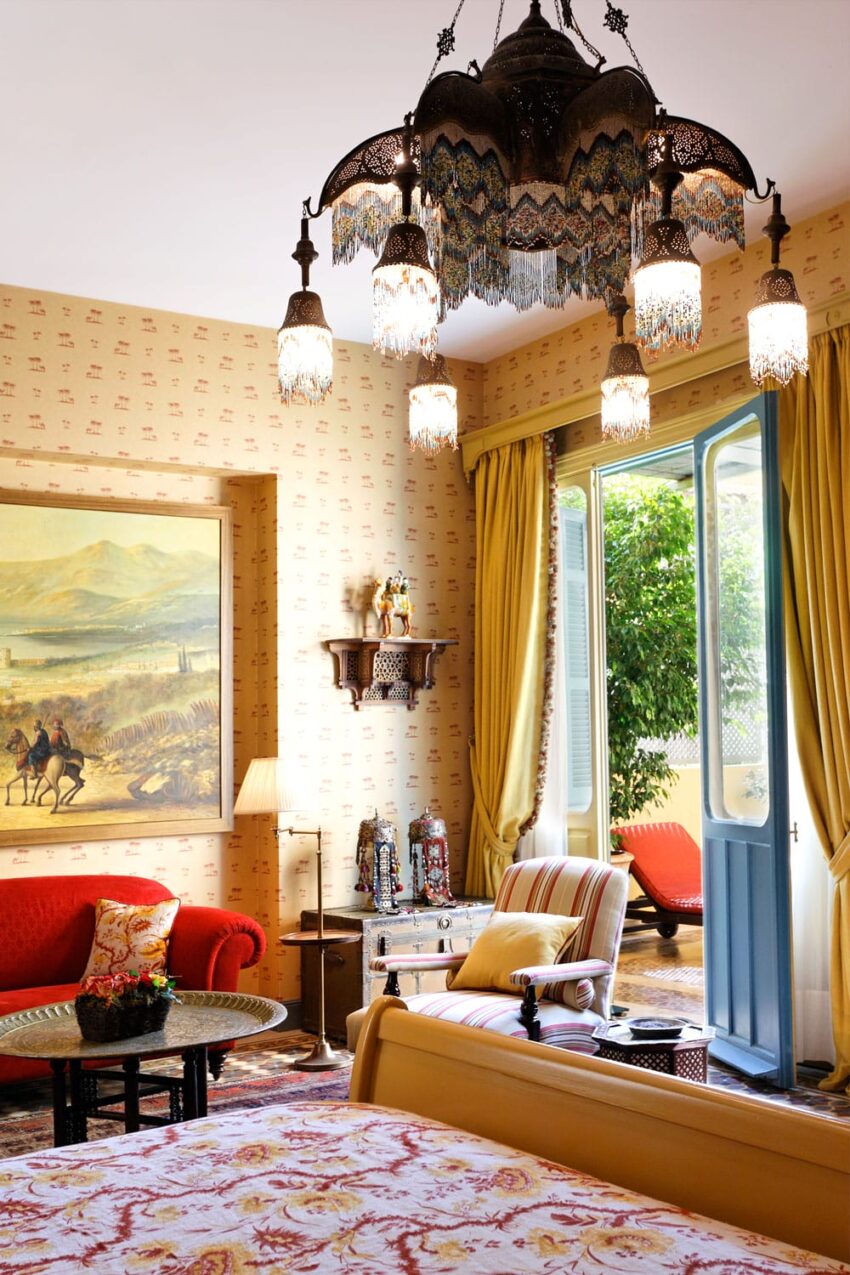
Another restored architectural beauty is the haunting Beit Beirut, an imposing neo-Ottoman building that was used as a sniper bunker during the civil war. Once dubbed the Yellow House due to its distinctive colored stone, the structure, with its hollow, bullet-riddled façade, which has been intentionally preserved, now serves as an urban cultural center dedicated to the memory of the war.
In the historic center of Beirut, the elegant Hotel Albergo offers visitors the chance to spend the night in a stately Lebanese building, with each room uniquely inspired by the old city. Other charming stays include the Villa Clara boutique hotel, with its seven rooms decorated with antique furniture and paintings by local artists, and the cozy guesthouse Beit El Tawlet.
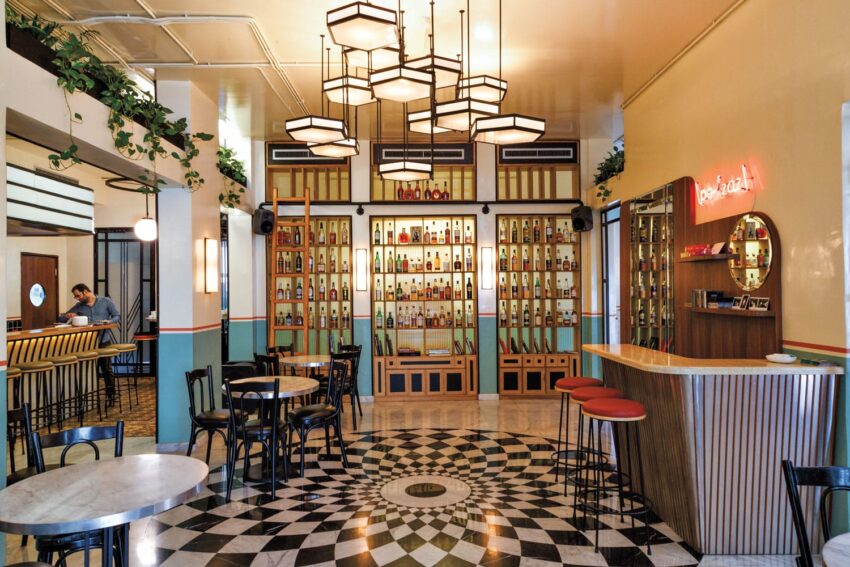
To experience Beirut’s rich culinary traditions, Liza Beirut offers the best modern Lebanese cuisine. Nestled in a 19th-century townhouse, the restaurant showcases stylish interiors by Maria Ousseimi and is filled with distinctive pieces by local design stars such as Karim Chaya, Bokja, and Nada Debs, who all have showrooms nearby. For a unique dining experience, head to Centrale Restaurant-Bar, an architectural feat by Bernard Khoury that features a dilapidated 1920s residential house wrapped in steel mesh.
Reccomended: Why You Need to Know Beirut-Born Artist Etel Adnan
Heading down to the bustling Port District, one is struck by the beauty and rawness of architect Lina Ghotmeh’s soon-to-open Stone Gardens, an incredible landmark building that will house a foundation. Steps away, Lux is a hot spot for organic Mediterranean specialties, while fashion insiders know to check out Maison Rabih Kayrouz.
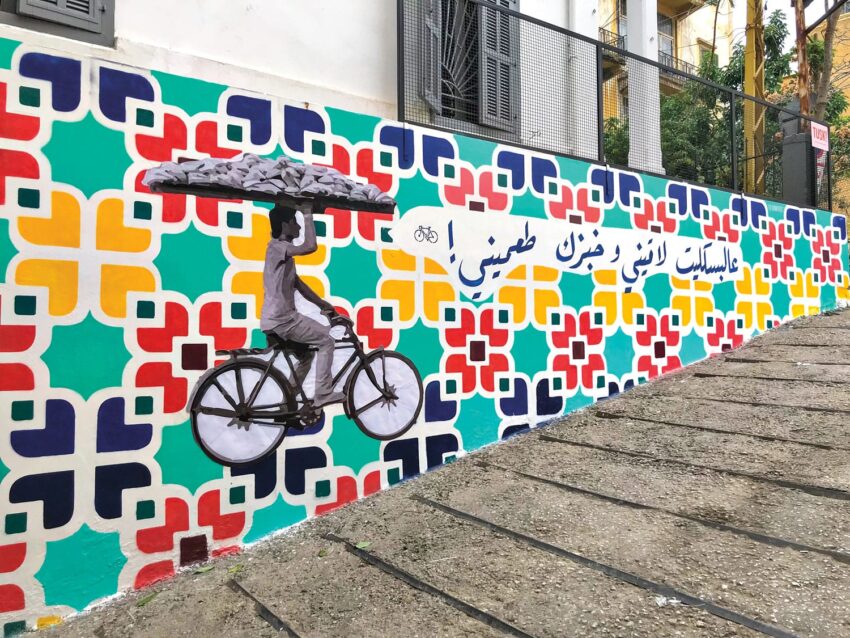
Around this area are some of Beirut’s edgiest art and design galleries. Marfa’ Projects and Sfeir-Semler Gallery, for example, both showcase work by local and international artists, while the influential Carwan Gallery provides an exquisite selection of design objects that fuse a European aesthetic with Eastern craftsmanship.
In the fashionable Mar Mikhaïel neighborhood, you’ll find the dynamic Galerie Tanit, along with some of the top bespoke boutiques such as the avant-garde Rosa Maria Jewellery and the Papercup bookstore. The best spots to unwind with a cocktail are Anise and Central Station, while Baron offers a twist on classic Mediterranean cuisine.
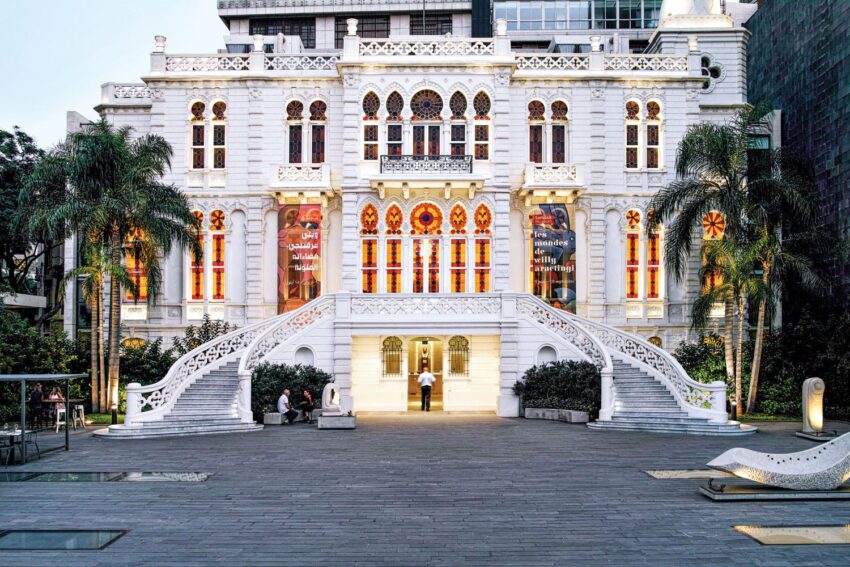
On rue Clémenceau, make sure to stop by Orient 499 and Artisan du Liban for beautiful handcrafted local goods before soaking up some jazz at the Salon Beyrouth, which was inspired by the Roaring ’20s salons.
“Constantly under construction, unfinished, Beirut unleashes the creator’s imagination and invites artists to draw from its textures and colors,” Ghotmeh says. While there may still be regional tensions and a lack of institutional support, art and culture have long played a key role in unifying Lebanese civil society, healing war wounds and drawing people of all walks to the vibrant, creative hub that Beirut has always been.
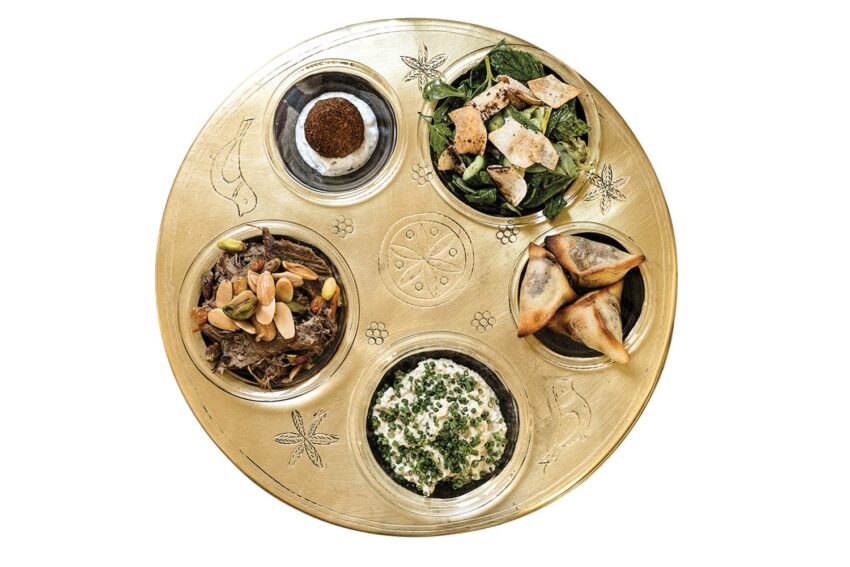
A version of this article first appeared in print in our 2018 Fall Issue under the headline Beirut Rising. Subscribe to the magazine.